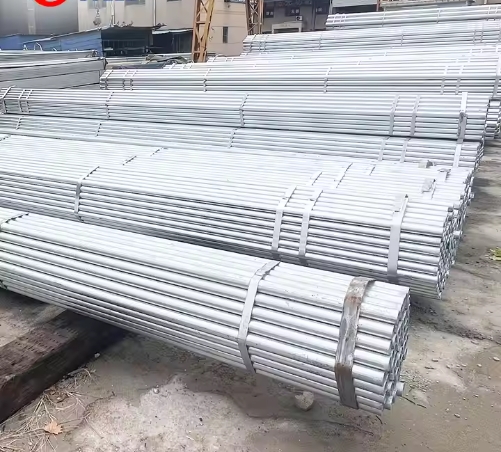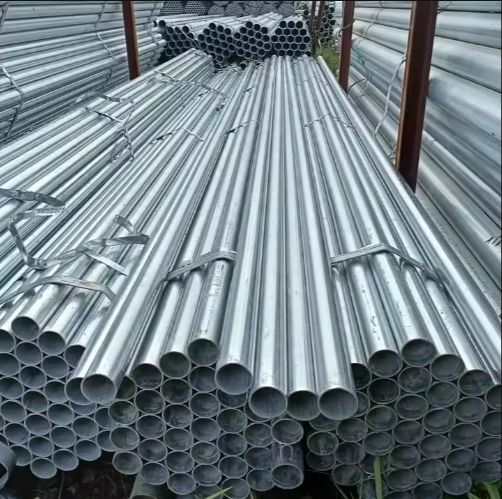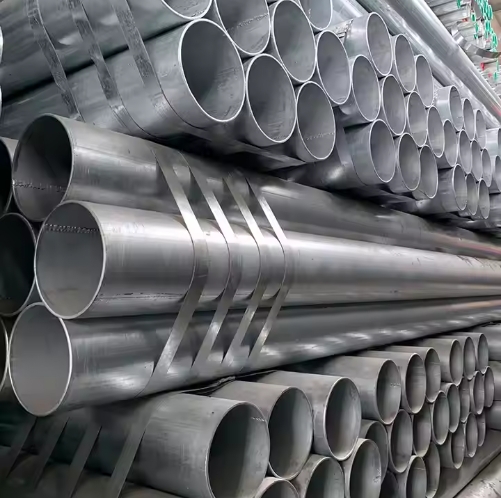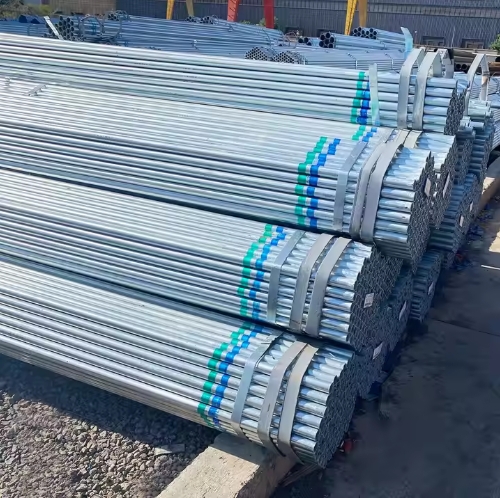Hot-dip galvanized square tubes, featuring rust resistance and corrosion resistance
Category:
Summary description:
Keywords:
Details
Hot-dip galvanized square tubes, featuring rust resistance and corrosion resistance, are square steels for building structures, available in various specifications and customizable. These versatile components have become indispensable in modern construction, offering a unique combination of strength, longevity, and adaptability that makes them stand out among other structural materials. As urbanization accelerates and infrastructure projects become more ambitious, the demand for reliable building materials has never been higher, and hot-dip galvanized square tubes rise to the challenge with exceptional performance across diverse applications.
The manufacturing process behind these square tubes is a key factor in their superior quality. Hot-dip galvanizing involves immersing the steel tubes in a bath of molten zinc, which bonds with the surface of the steel to form a protective coating. This metallurgical bond creates a barrier that is both physically tough and chemically resistant, preventing moisture, oxygen, and other corrosive elements from reaching the underlying steel. Unlike other coating methods that merely sit on the surface, the zinc layer in hot-dip galvanized products becomes an integral part of the tube, ensuring long-lasting protection even if the surface is scratched or damaged during installation or use. This process typically results in a coating thickness of 85 microns or more, far exceeding the protection offered by paint or electroplating, which often provide only 20-30 microns of coverage.
Rust resistance and corrosion resistance are not just marketing claims but proven properties backed by extensive testing and real-world performance. In environments where steel is exposed to rain, humidity, saltwater, or industrial pollutants, unprotected materials can start to corrode within months, leading to structural weakening and costly maintenance. Hot-dip galvanized square tubes, however, thrive in such conditions. The zinc coating acts as a sacrificial anode, corroding slowly over time instead of the steel substrate, a phenomenon known as cathodic protection. This means that even in coastal areas with high salt content in the air, or in industrial zones with chemical emissions, these tubes maintain their structural integrity for decades. Studies have shown that hot-dip galvanized steel structures can last 50 years or more in moderate environments, and up to 30 years in harsher conditions, significantly outperforming untreated steel.
In the realm of building structures, hot-dip galvanized square tubes play a multifaceted role. Their uniform shape and consistent dimensions make them ideal for use in framework systems, where they provide stable support for walls, roofs, and floors. In commercial buildings, they are often used in the construction of steel frames that form the skeleton of high-rises, shopping malls, and office complexes, offering the strength to bear heavy loads while keeping the overall weight of the structure manageable. Residential construction also benefits from their use, particularly in modern prefabricated homes and extensions, where speed of assembly and durability are paramount.
Beyond primary frameworks, these square tubes excel in secondary structural elements. They are commonly employed in balustrades, handrails, and guardrails, where their corrosion resistance ensures safety and aesthetics are maintained over time. In industrial settings, they serve as supports for machinery, conveyor systems, and storage racks, withstanding the wear and tear of daily operations. Even in infrastructure projects like bridges, overpasses, and public transportation hubs, hot-dip galvanized square tubes are chosen for their ability to endure constant exposure to the elements and heavy usage.
One of the most significant advantages of hot-dip galvanized square tubes is the availability of various specifications and customizable options. This flexibility allows them to meet the unique requirements of almost any project. Standard specifications typically range in size from small 20x20mm tubes to large 200x200mm or even larger, with wall thicknesses varying from 1.5mm to 10mm or more, depending on the intended load-bearing capacity. Lengths are also variable, with common options including 6 meters, 9 meters, and 12 meters, but custom lengths can be produced to reduce waste and simplify installation.
Customization extends beyond basic dimensions. Clients can request specific mechanical properties, such as higher tensile strength or improved ductility, to suit specialized applications. Surface treatments, while the hot-dip galvanizing is already a robust finish, can be further tailored in some cases to meet specific aesthetic or functional needs, though the inherent zinc coating is often sufficient for most purposes. Additionally, pre-fabrication services, such as cutting, drilling, or welding, can be performed on the tubes before delivery, saving time and labor on the construction site.
Engineers and architects value hot-dip galvanized square tubes not only for their physical properties but also for their economic benefits. While the initial cost may be slightly higher than untreated steel, the long-term savings are substantial. The reduced need for maintenance, repairs, and replacements over the lifespan of the structure translates to lower lifecycle costs. Furthermore, the speed of installation, thanks to consistent dimensions and customizable options, helps shorten construction timelines, getting projects completed on schedule and within budget.
Sustainability is another key advantage of hot-dip galvanized square tubes. Steel is one of the most recycled materials in the world, and the hot-dip galvanizing process is environmentally friendly, with zinc being a naturally occurring element that can be recycled indefinitely without losing its properties. The long service life of galvanized structures also reduces the need for frequent material replacement, minimizing the environmental impact associated with manufacturing and transportation of new materials. This aligns with the growing global focus on sustainable construction practices and green building certifications.
In conclusion, hot-dip galvanized square tubes represent a superior choice for modern building structures, combining exceptional rust resistance, corrosion resistance, and versatility. Their ability to be produced in various specifications and customized to meet specific project needs makes them indispensable in a wide range of applications, from commercial and residential buildings to industrial facilities and infrastructure projects. The long-term durability, economic benefits, and sustainability of these tubes ensure that they will continue to be a cornerstone of the construction industry for years to come. As construction techniques evolve and demands for safer, more durable, and environmentally responsible structures increase, hot-dip galvanized square tubes stand ready to meet the challenges of the future.
More Products
Message

All Rights Reserved Copyright © RIZHAO STEEL HOLDING GROUP CO.,LTD. SEO 【Business license】
All Rights Reserved Copyright © RIZHAO STEEL HOLDING GROUP CO.,LTD.




















